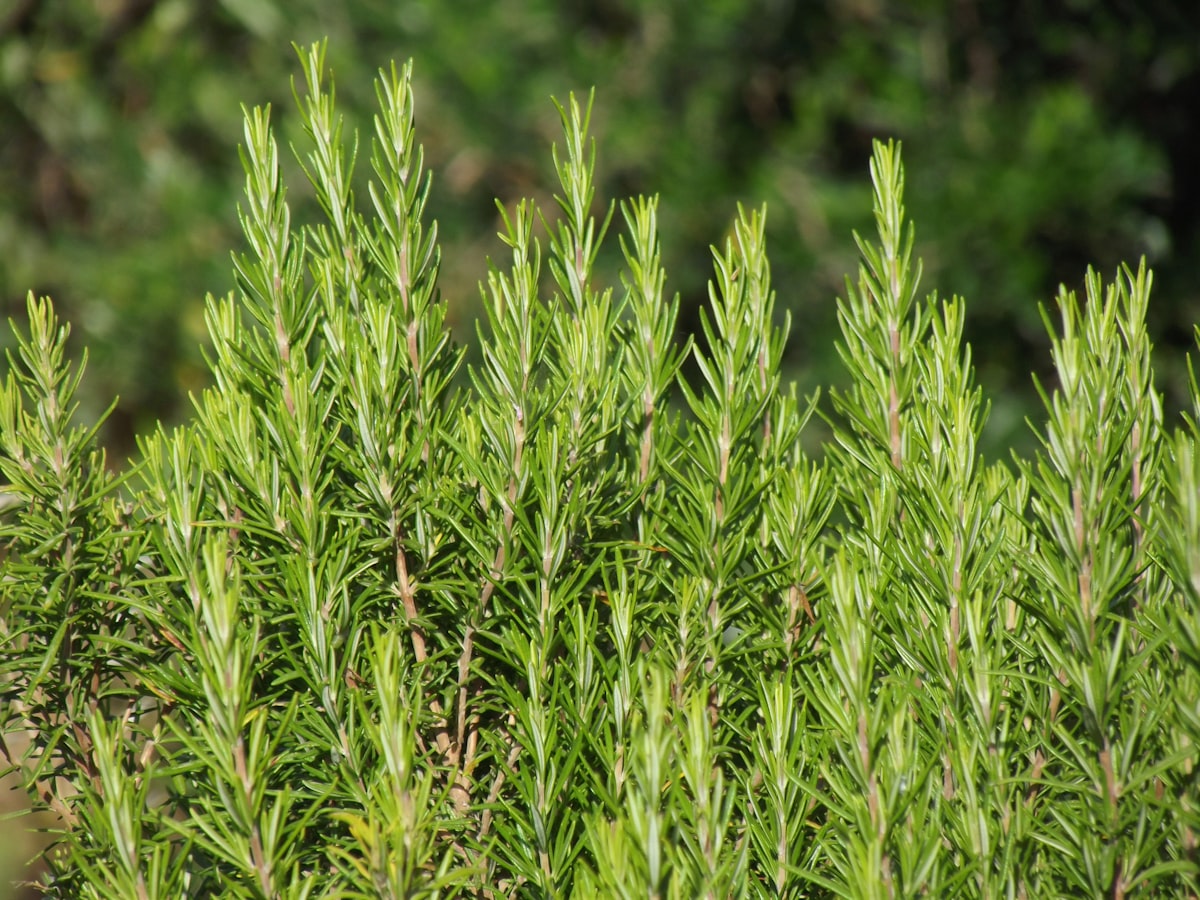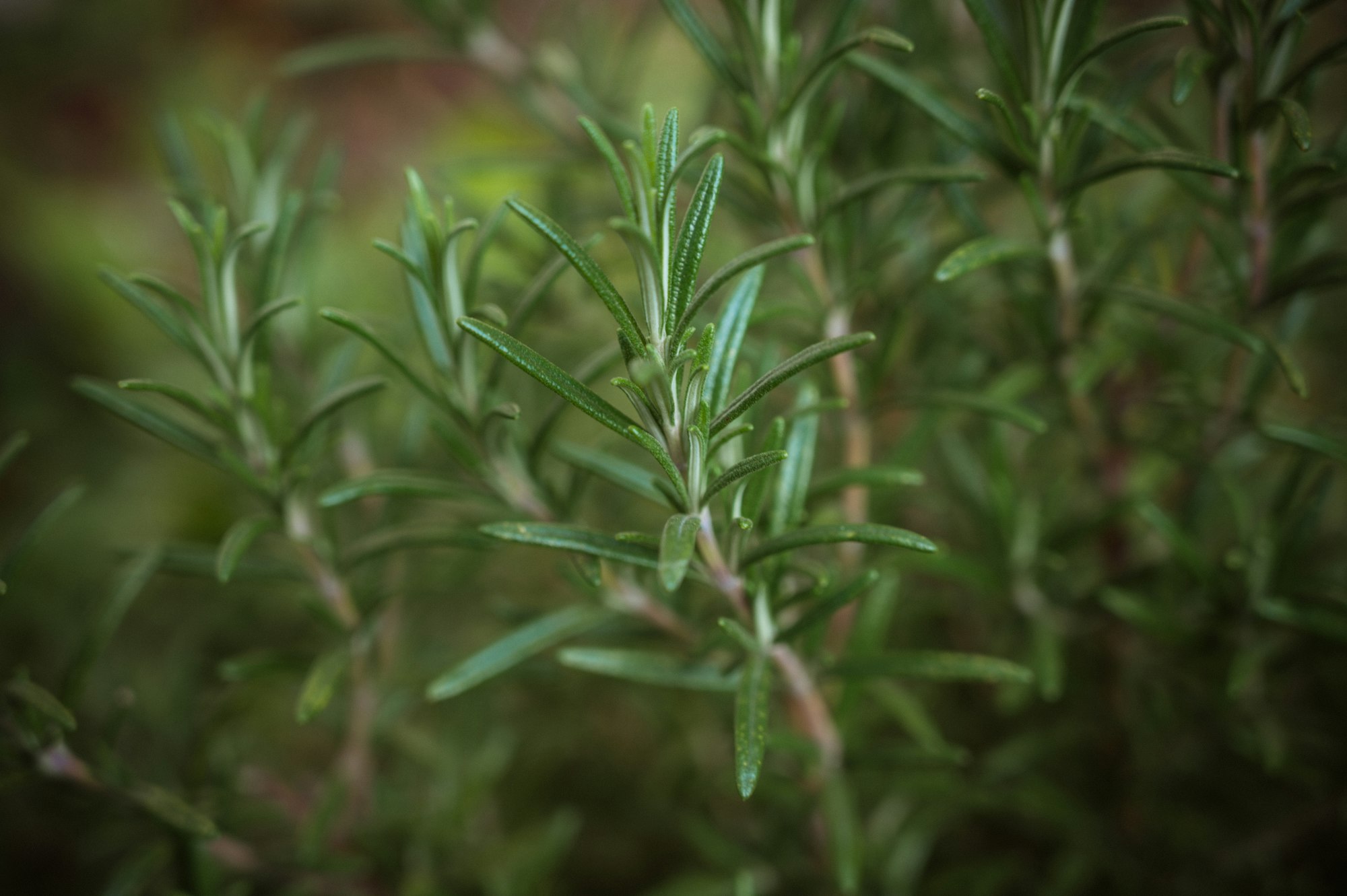How to Grow Rosemary
Growing rosemary can be a rewarding endeavor for both novice and experienced gardeners. This fragrant, evergreen perennial shrub offers an attractive appearance and a delightful aroma, making it a popular choice for ornamental and culinary uses.

Table of Contents
To successfully grow rosemary, you must consider light, water, soil, and climate factors.
This guide will walk you through the essential steps and techniques for cultivating healthy rosemary plants in your garden or indoor space.
About Rosemary Plant
Rosemary (Salvia rosmarinus, formerly known as Rosmarinus officinalis) is a popular herb valued for its aroma and flavor.
This evergreen perennial is a rounded shrub with slender, needle-like, gray-green leaves on erect woody stems.
As an attractive and fragrant plant, rosemary is widely grown in gardens for its culinary and medicinal properties.
In addition, it produces blue-purple flowers during the summer, making it an appealing addition to your garden.
Growing Rosemary
It is best to start with a cutting rather than using seeds to grow rosemary. Seeds can take months to germinate with a low success rate.
Find an existing rosemary plant, then clip off a few 4-inch pieces to propagate.
Choose well-drained soil with a pH between 6.0 and 7.0 to encourage successful growth. Incorporate compost into the soil to provide essential nutrients and improve drainage.
Plant your rosemary cutting in the spring, either directly in the ground or in a container, depending on your preference and space.
If planting in a container, use a pot with drainage holes and quality potting mix.
For in-ground plants, select a location with full sun exposure and space them about 2 to 3 feet apart to promote proper air circulation.
As your rosemary grows, you can prune it to maintain a desired shape and size, particularly if you're using it as a garden ornamental near paths, where brushing by releases its pleasant scent.

Caring for Rosemary Plant
Sun and Temperature
Rosemary thrives in full sun, requiring at least 6 hours of direct sunlight daily. Ideally, you should maintain a temperature range of 60-70°F (15-20°C) for optimal growth.
Water and Humidity
Rosemary prefers a dry environment and does not like overly moist conditions. Water the plant when the soil surface feels dry, ensuring proper drainage to prevent root rot from excess moisture.
Soil and Fertilizing
Well-draining soil is crucial for healthy rosemary growth. Combine equal parts of potting soil, sand, and peat moss for the best mix.
Fertilize sparingly – apply an all-purpose, water-soluble fertilizer once in spring and again in midsummer at half the recommended strength.
Pruning and Propagation
Prune your rosemary plant regularly to promote healthy, bushy growth and remove woody or dead stems.
To propagate, snip off a few healthy 3-5 inch cuttings, remove lower leaves, and dip the cut ends in rooting hormone before planting them in a moist potting mix.
Troubleshooting Plant Problems
Growing Problems
Overwatering can cause rosemary foliage to wilt. If you notice this, test the soil's moisture with your fingertip and water the plant accordingly.
To prevent root-bound rosemary plants, transplant them to a larger pot when you see mostly roots instead of soil.
Powdery mildew typically occurs when soil is too moist or there's insufficient sunlight. Ensuring proper air circulation and adequate sunlight exposure can help prevent this issue.
Pests and Diseases
Spider mites are common pests in rosemary plants. To prevent them, maintain proper plant care and avoid creating conditions where they can thrive.
Monitor your rosemary and treat infestations with insecticidal soap or neem oil.
Fungal and bacterial diseases, like root rot or black root, can affect rosemary plants.
To prevent these, avoid overwatering and practice good plant hygiene, like pruning infected roots.
If your plant's root system is heavily infected, it is best to discard the plant and start anew.
Companion Planting
Planting rosemary alongside other herbs like thyme, sage, and oregano can help to improve its flavor and growth.
It also does well when planted near vegetables like beans, cabbage, and carrots, as these plants can help to repel pests and attract beneficial insects.
Conclusion
Rosemary is a fragrant herb that grows as a perennial, rounded, evergreen shrub with slender, needle-like, gray-green leaves on erect woody stems.
To grow rosemary successfully, ensure proper planting care, such as spacing starter plants 2 to 3 feet apart, providing sharp drainage, and transplanting outdoors when the plant reaches 4 inches in height.
In colder climates (zone 6 or lower), remember to bring the rosemary plant indoors during the winter or consider growing it annually.
Following these care tips and being patient with germination, you can cultivate healthy rosemary plants and enjoy their aromatic qualities throughout the year.
Frequently Asked Questions
What conditions are best for growing rosemary?
Rosemary thrives in full sun exposure and well-draining soil with a pH between 6 and 7. Ensure your rosemary plant has ample space, as it can grow up to 4 feet tall and wide.
How can I propagate rosemary from cuttings?
Cut a 4 to 6-inch branch tip with new softwood growth in spring or summer. Remove lower leaves, dip the bottom of the stem in rooting hormone, and plant it in a soilless potting or seed starting mix. Place it in a warm spot with bright indirect light.
What are the pruning techniques for rosemary?
Regularly trim your rosemary plant to promote bushy growth and prevent it from becoming too woody. Focus on removing dead or weak branches and shaping the plant; avoid cutting into old, thick wood, as it may not regenerate new growth.
Is it best to grow rosemary indoors or outdoors?
Rosemary can be grown both indoors and outdoors. However, outdoor plants usually grow faster and healthier. If you live in colder climates or have limited outdoor space, growing rosemary indoors in a pot is a viable option, provided you can offer it plenty of sunlight.
How long does it take for rosemary to grow?
Rosemary plants generally grow slowly, taking up to 15 months to maturity when grown from seeds and one year from cuttings.
Can rosemary be grown from seeds?
Yes, rosemary can be grown from seeds, but it is often more challenging and time-consuming than cutting propagation. Be patient and keep the soil moist, as the seeds can take several weeks to germinate.


